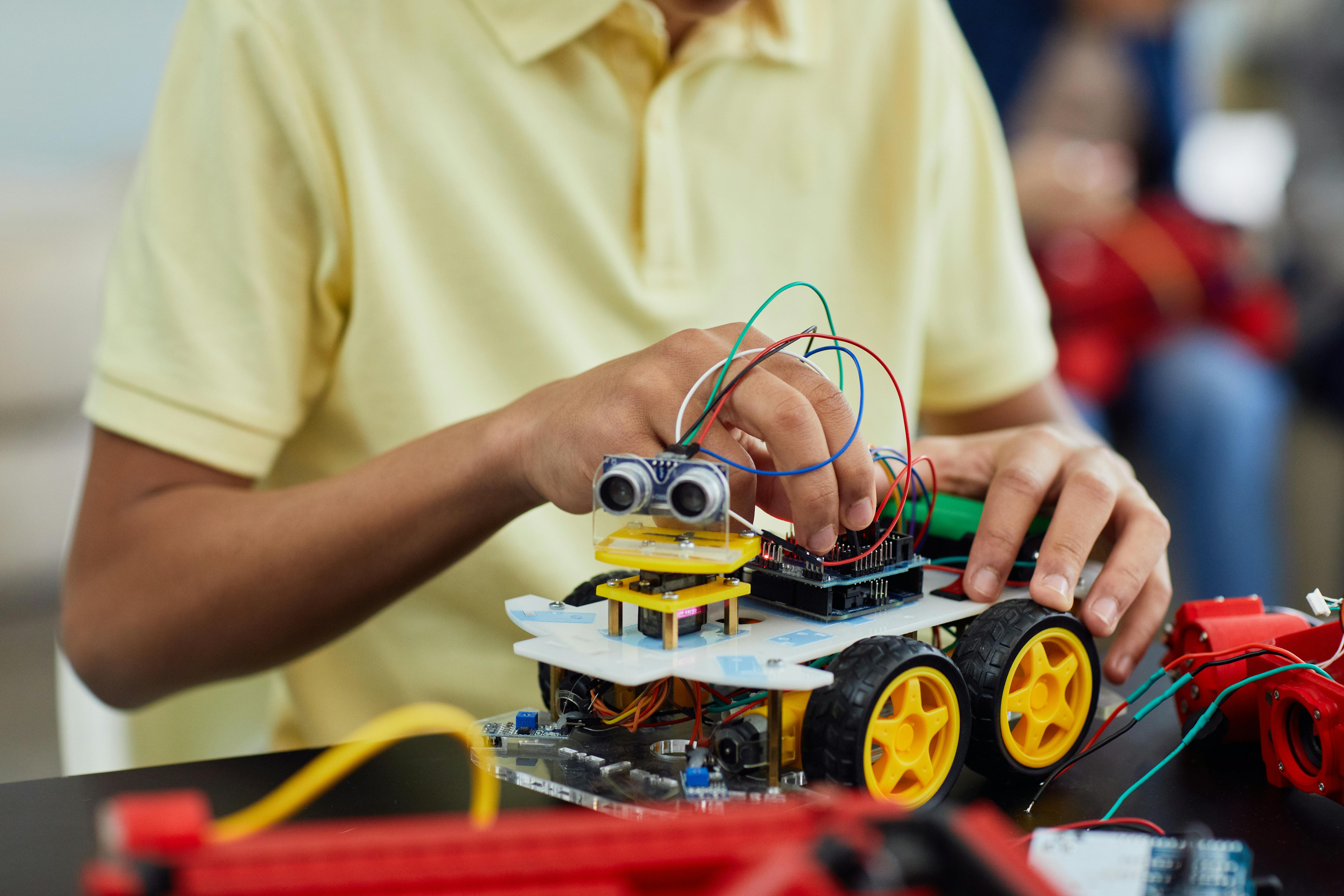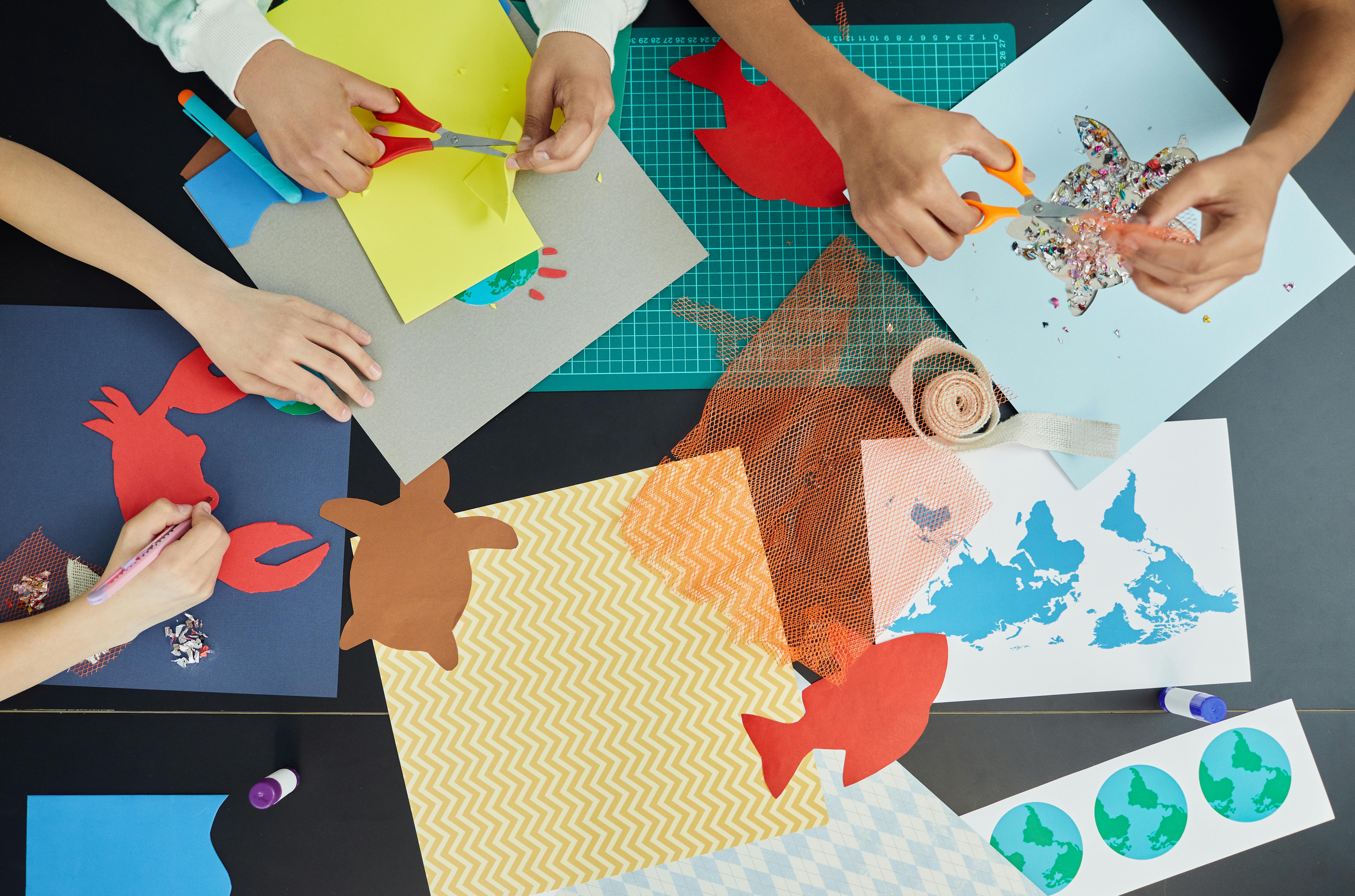As an affiliate, I earn from qualifying purchases, but this doesn't affect the reviews or recommendations—your trust is important to me!
Creating Your Own Lava Lamp: A Fun STEM Experiment

Today, We're Making:
- Homemade Lava Lamp STEM Experiment
- Cosmic Calendar Project - A fun project that encourages kids to explore the expanse of the universe by creating a homemade cosmic calendar. The project can involve converting the age of the universe (currently estimated at 13.8 billion years) into a single year to help kids grasp the enormity of cosmic time. They can also indicate important milestones like the appearance of the first stars,formation of the Earth,and existence of humans. This will supplement the Lava Lamp experiment by exploring the concept of time and space.
- DIY Sundial Kit - This kit could involve a simple structure made of card,clay,or wood.
Ever stared in awe at a colorful Lava Lamp show?
Have you ever been captivated as a vibrant plume rose elegantly into a sphere, then fell back down in an enchanting dance of liquid light in a Lava Lamp?
Discover the Science and Recreate it at Home
What if I told you that not only could you pull apart the science behind this mesmerizing spectacle, but also recreate it right at your dining table?
Indeed, creating a Homemade Lava Lamp STEM Experiment could turn an ordinary afternoon into an intriguing journey through the fields of science. It opens up a world of entertainment, exploration, and education right within your home.
Dive into the Surprising World of STEM Experiments
Through this DIY Lava Lamp venture, children and adults alike can easily immerse themselves in the delightfully surprising world of STEM experiments.
With a mix of creativity, education, and excitement, strap in and prepare yourself for some enlightening homemade science fun!
Unveiling the Mysteries behind the Homemade Lava Lamp STEM Experiment
We're looking forward to revealing the magic and science behind the DIY Lava Lamp. 'STEM Experiments' may sound intimidating, especially when used in the context of a fun science project at home. How can STEM - which stands for Science, Technology, Engineering, and Math - be both educational and entertaining? Trust me when I tell you that it's easier than it seems. The Homemade Lava Lamp STEM Experiment encapsulates the wonder of science learning and the thrill of creation, making it perfect for younger and older learners alike. It demonstrates how science can be a delightful tool for discovery and entertainment at home.
So, What Goes into a DIY Lava Lamp?
To burst your curiosity bubble, creating a homemade lava lamp doesn't involve harnessing actual molten rock! Instead, it utilizes simple, easily available household ingredients. That's one of the attractions of DIY science experiments: you can create awe-inspiring phenomena without needing fancy lab equipment! Here's a quick list of what you'll need:
- A clear glass jar
- Water
- Vegetable oil
- Food coloring
- Effervescent tablets (like Alka-Seltzer)
With these ingredients and some Lava Lamp instructions, we can dive straight into the exciting hands-on part of our Homemade Lava Lamp STEM Experiment.
The Magic of Science: Creating Your DIY Lava Lamp
Before you embark on this scientific adventure, it might be handy to know what is really happening when you create your own lava lamp. We're delving into the territories of density and buoyancy here! As the effervescent tablet dissolves, it creates gas bubbles that rise through the oil, carrying some coloured water along with them. Once the gas bubbles escape into the air, the denser water droplets fall back through the oil, thus giving the alluring 'lava' effect in your homemade lava lamp.
Designing your DIY Lava Lamp isn't just a noun—it's a verb, an active process of discovery and learning. More than just engaging in fun STEM learning, children who embark on this Homemade Lava Lamp STEM Experiment will be building their observation skills, nurturing a scientific mindset, and stoking their interest in how the world works. And the bonus—you get a groovy piece of home decor at the end of it!
Turning an Afternoon into a Science Fair with the Homemade Lava Lamp STEM Experiment
This DIY Lava Lamp experiment is an ideal pathway to introduce kids to STEM activities. Not only is it an easy science experiment that can be set up in minutes, but the result is also delightful, visually enchanting, and educational fun. By making a lava lamp at home, you are literally illuminating the adventurous elements of science learning with a sparkle of creativity! It's the perfect blend of learning with fun and a compelling way to bring science to life for young minds. When it comes to self-made lava lamps—science is not just theoretical. It's tangible, beautiful, and scintillating – quite literally!

The Magic of Homemade Lava Lamp STEM Experiment
So, we've given you all the secrets to stirring up a bubbling show of magic right from your kitchen. You're now Scientist, Teacher, and Showman rolled into one. This Homemade Lava Lamp STEM Experiment proves, without a doubt, that science doesn't need to be daunting. Rather, it's a path to adventure, discovery, and creativity served with doses of delightful learning.
The Transformation of Household Materials
You've just taken mundane household materials and transformed them into a spectacle of floating ‘lava’, a testament of the amazing things that can emerge from curiosity and inventiveness.
Turning Science into Art
As the colorful bubbles in your DIY Lava Lamp dance around, never forget this moment you turned science into art, and your dining table into a curious world of exploration.
The Fantastic Magic of STEM
Now, that's the fantastic magic of STEM! Until our next journey into the realms of home-science, keep the wonder alive, the spirit of adventure aglow, and continue coloring your world with fascination.

You May Also Like These:
Cosmic Calendar Project
Explore the expanse of the universe with your child by creating a homemade cosmic calendar. This project involves converting the estimated age of the universe into a single year, and highlighting key milestones, such as the appearance of the first stars. Let's get started!
Ingredients
- A large piece of paper or poster board
- Markers or colored pencils
- A ruler
- Calculators
Instructions
- Discuss the Concept: Start by explaining the concept to your child. Talk about how the universe is estimated to be 13.8 billion years old, and how difficult that can be to comprehend. Tell them that you'll be converting that huge number into a one-year calendar to make it easier to understand.
- Calculate the Conversion: Next, you'll need to do a little math. One year has about 525,600 minutes in it, so each minute of your cosmic calendar will represent about 26,280 years (that's 13.8 billion divided by 525,600).
- Draw Your Calendar: Now it's time to draw your calendar! You can do this on a large piece of paper or poster board. Use a ruler to split it into twelve equal parts to represent months, and then split those into roughly 30 parts each to represent days. Each day will be about 87,540 years long. You might choose to represent each week or month instead depending on the level of detail you want to achieve.
- Mark Your Milestones: Finally, identify key events in the history of the universe and place them on your calendar. You might include things like the Big Bang, the formation of the first stars, the appearance of the first life forms on Earth, the extinction of the dinosaurs, etc. Be sure to research and calculate when these events would have happened on your cosmic calendar.
Enjoy this enriching and exciting project as your child gets a hands-on understanding of the enormity and wonder of our universe!
DIY Sundial Kit
Objective:
To build a simple sundial that will explore the concept of time and space.
Materials Needed:
- Cardboard
- Sticky tape
- Marker pen
- Protractor
- Compass
- Stick (Approximately 12 inches long)
Instructions:
- Create the Sundial Base: Cut the cardboard into a circular shape with a diameter of around 12 inches using the compass.
- Position the Stick: Place the stick in the center of the circle and secure it using the sticky tape.
- Mark the Hours: Start by marking “12”ore at the top where the stick’s shadow falls at noon. Using the compass and the protractor, divide the circle into 24 segments of 15 degrees each, representing the 24 hours in a day.
- Add the Time Markings: Write the corresponding hours next to each of the 24 lines you've drawn. Be mindful that sundial hours run counterclockwise rather than clockwise.
- Use Your Sundial: Take your sundial outside in a sunny spot. To use the sundial, align it so that the “12” landmark point lines up with North direction. The current hour will be indicated by the stick's shadow line.
Conclusion:
At the end of this STEM project, students would have built a functional sundial. In so doing, they would have got a practical understanding of how the sun's position affects our perception of time and honed some craft skills in the process.
DIY Sundial Kit - A Fun and Educational STEM Project
Introduction:
This kit involves building a simple sundial structure made of card. It takes STEM education outdoors to explore the concept of time and space. This project is a great supplement to the Lava Lamp experiment, bridging the gap between practical hands-on learning and abstract scientific concepts.
Materials Needed:
- Cardboard (about the size of a dinner plate)
- Ruler
- Pencil
- Scissors
- Protractor
- Drinking straw or a thin stick
- Watch or clock
Instructions:
- Prepare the base: Cut the piece of cardboard into a circle. This will serve as the base of your sundial.
- Mark the center: Use a ruler and a pencil to find and mark the center of your base.
- Create the gnomon (indicator): Cut the straw or thin stick to about the length of the radius of your base. Attach it to the center of the base.
- Mark the hours: Take the sundial outdoors on a sunny day. Check your watch or clock every hour, and mark on the base where the shadow falls.
Learning Outcome:
This STEM project aims to give children a practical understanding of how ancient civilizations conceived the concept of time using sundials, and fosters appreciation for the advancements in time-telling since then. Additionally, it promotes scientific curiosity, outdoor activity, and critical thinking.
Clay Volcano: A STEM Project
Materials Needed:- 1 cup flour
- 1/2 cup salt
- 1 cup water
- 2 tbsp cooking oil
- Red food coloring
- 1/4 cup baking soda
- 1/4 cup vinegar
- Preparation: Cover your work area with newspaper or a disposable tablecloth to prevent messes.
- Clay making: In a large mixing bowl, combine the flour, salt, and oil. Gradually add water while stirring until it forms a clay-like consistency.
- Volcano building: Shape the clay into a volcano shape on a solid base. Make sure to leave a hole at the top for the 'lava'.
- Drying: Let the clay dry overnight or until it's hard to the touch.
- Lava preparation: In a separate container, mix together the baking soda, vinegar, and a few drops of red food coloring.
- Eruption time: Pour the baking soda and vinegar mixture into the top of the clay volcano and watch the 'lava' erupt!
STEM Project Instructions: Building a Wooden Robot
Materials Needed:
- Plywood (12' x 12' piece)
- Jigsaw
- Sandpaper
- Wood Glue
- Paint & Brushes
Instructions:
Step 1: Preparing the Wood
First, you will need to take your piece of plywood and carefully cut it into the required pieces using your jigsaw. You should have:
- Two rectangles for the body
- Four squares for the arms and legs
- One square for the head
- Two small rectangles for the feet
Step 2: Sanding the Wood
Take the sandpaper and carefully smooth all the rough edges of the pieces you've cut.
Step 3: Assembling the Robot
Now, it’s time to assemble your robot! Use wood glue to secure the pieces together in the shape of a robot.
Step 4: Painting
Once the glue has dried, it's time to get creative! Use your paint and brushes to give your robot some character.
Safety Notes:
- Remember to wear safety glasses when using the jigsaw.
- Ensure that you are in a well-ventilated space when using the wood glue and paint.











